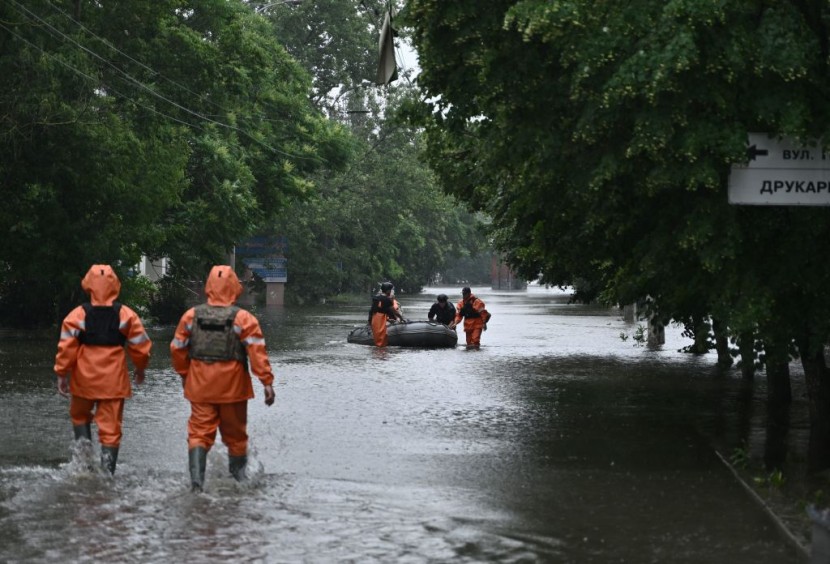
Ukraine reports that the extent of the flooded area caused by the Kakhovka dam rupture in the Kherson region has been reduced in half. Still, experts and authorities are concerned that infectious illnesses may spread in the contaminated waters.
Kakhovka Dam Collapse Update
Alexander Prokudin, the chairman of the regional government, reported a water level decline of 27 centimeters (10 inches). Yet the interior ministry said thousands of Ukrainian houses are still submerged.
The issue is that tens of thousands of people have been left without a reliable source of drinking water, according to BBC.
On Tuesday, June 6, the large Kakhovka Dam collapsed, unleashing a massive torrent of water that immediately inundated broad swaths of property on both banks of the Dnipro River.
The Ukrainian government has accused Russia of blowing up the dam since it is in the territory now under Russian administration. Russia has disputed this and instead placed blame on Ukraine for the building's demise.
The massive Kakhovka reservoir, an essential water supply for the area, has dried up behind the dam.
Concerns With Water Quality
Dr. Jarno Habicht, the WHO representative in Ukraine, described the situation to BBC News as "devastating" and stressed the need to ensure access to clean water. He emphasized the need to monitor water-borne diseases and assured people that preventative sample testing was in progress.
UK's Ministry of Defense acknowledges the situation, saying that there is a sanitation crisis due to a lack of clean water and a rise in the prevalence of water-borne illnesses.
Kherson, a city around 100 kilometers (62 miles) from the Kakhovka dam that has been significantly impacted by the floods, has instituted limitations on the usage of river water despite Ukrainian authorities' claims that no instances of infectious diseases have been documented.
The city's military government has issued a ban on swimming, fishing, drinking, and allowing animals access to the water due to its high pollution levels caused by the flooding of homes and sewage infrastructure.
Ukrainian interior ministry reported that in Kherson, 32 Ukraine-controlled communities and another 14 Russia-controlled communities suffered floods. In the Mykolayiv area, another 31 communities were impacted by the flooding, as well.
Long-Awaited Counteroffensive Begins
In a recent report about Ukraine, President Volodymyr Zelensky declared that his country's long-awaited counteroffensive against Russia has started. However, he stressed that he would not provide any information about the ongoing counteroffensive.
Long-range strikes on Russian targets have been launched as Ukrainian troops have advanced east of Bakhmut and south of Zaporizhzhia.
Russian President Vladimir Putin even acknowledged this in a video interview aired last week, saying, "We can definitely state that this Ukrainian offensive has begun."
Meanwhile, Canadian Prime Minister Justin Trudeau surprised the world by visiting Ukraine and promising an additional 500 million Canadian dollars (about $373 million) in military aid.








